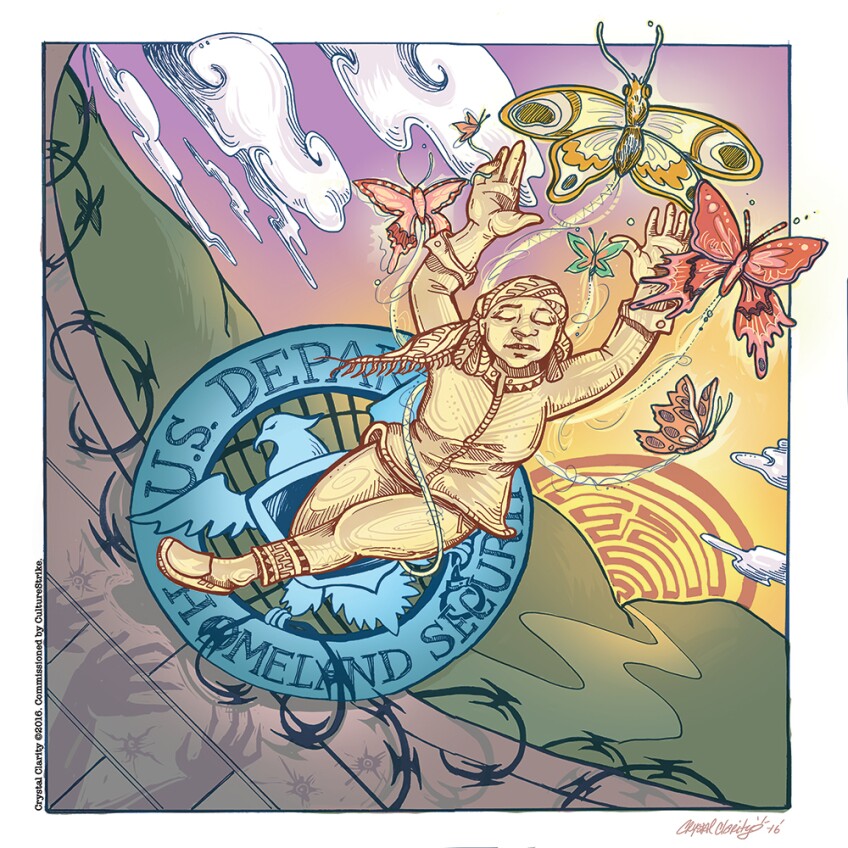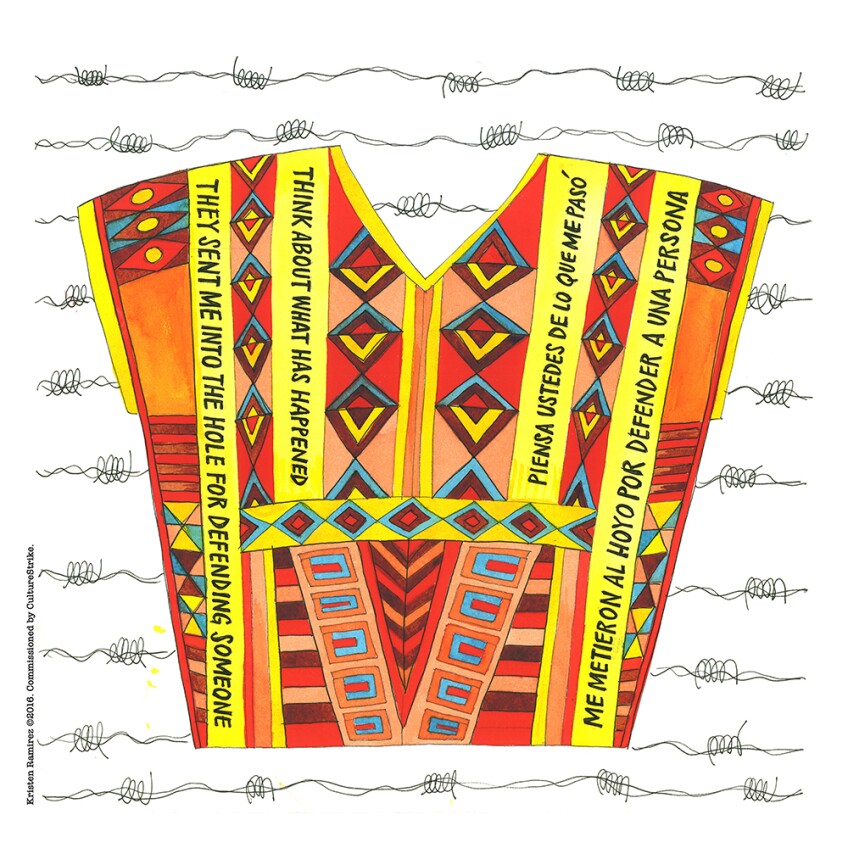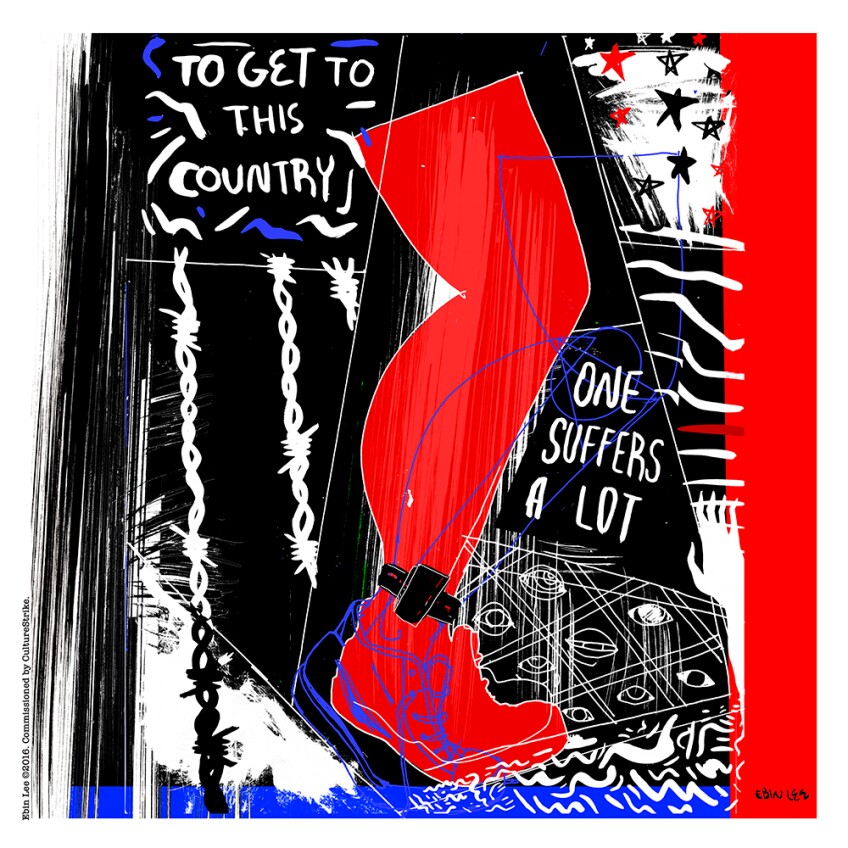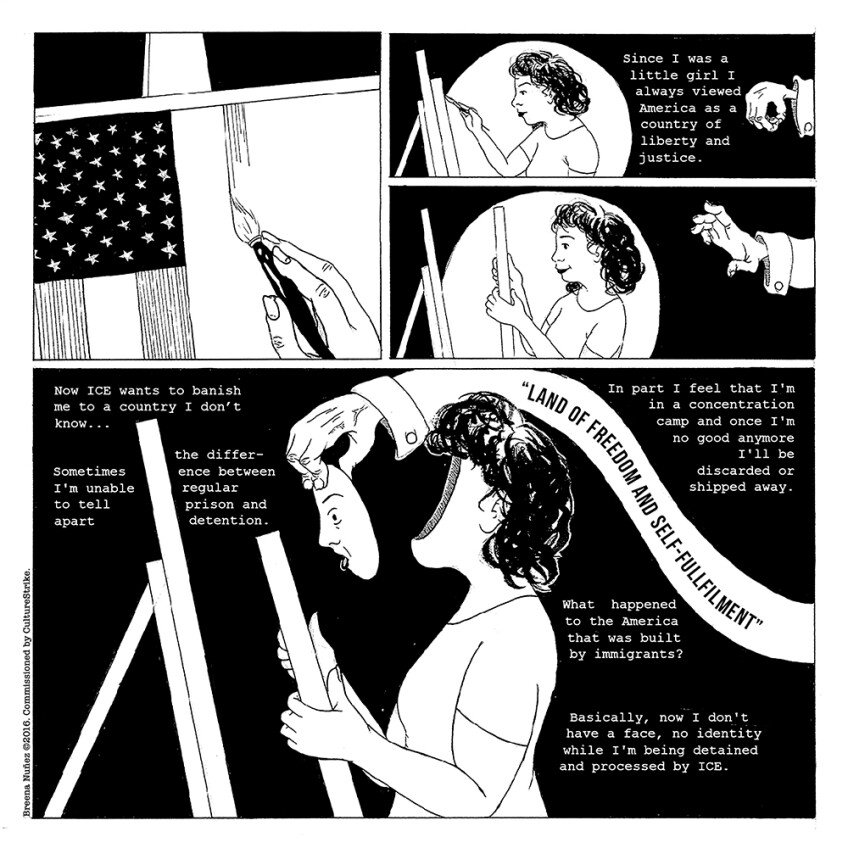These Artists Reflect the Voices, Challenges, and Resiliency of Trans and Detained Immigrants


In partnership with CultureStrike: CultureStrike is a national organization that empowers artists and social justice movements to dream big, disrupt the status quo, and envision a world grounded in shared humanity through art. We leverage the power of culture and creativity to transform sentiment about immigration, honor our environment, and promote human rights
Following the victory of Donald Trump, the stocks of the two largest private prisons surged.
This surge echoed Trump’s law-and-order platform of expanding deportations and instituting nationwide stop-and-frisk policies. Such boost in prison stocks conflicts with the recent decision by the Department of Justice (DOJ) to phase out federal contracts with the private prison industry. While this ruling marked progress for criminal justice reform, the fight to end federal contracts with private detention centers remains. But with a new administration, progress for immigration reform will be met with serious pushback, which necessitates creative approaches to advance immigrant rights.
In these uncertain political times, art is necessary, as art can be uplifting, informative, and even transformative. “Visions From the Inside,” a project commissioned by CultureStrike — a pro-migrant arts organization — challenges the anti-immigrant sentiment that long existed before the 2016 presidential election.

KCET recently spoke with artist, undocu-queer activist, and Culturestrike project coordinator, Julio Salgado about this project and how art informs politics and culture.
For “Visions From the Inside,” 12 artists from across the country were commissioned to illustrate letters penned by detained persons to address the inhumane conditions they endure and the strength they embody. This project, in partnership with other immigrant rights groups including Familia Trans Queer Liberation Movement and End Family Detention, is part of a larger movement to stop the separation of families and criminalization of undocumented people. “By visually illustrating these letters we aim to bring awareness and a better sense of the realities that people are experiencing inside of for-profit detention facilities, what led them to migrate in the first place and, most importantly, highlighting the resiliency of the migrant spirit,” states the project’s press release.

“I didn’t come here to hurt anybody. I just came to this country trying to save my life,” writes Marlon. Artist Kristen Ramirez, illustrated this excerpt by recreating a jail uniform as a huipil, a traditional woven garment worn by indigenous Mexican and Central American women. As stated in Ramirez’s artist's statement, “she draws comparisons between prison uniforms and this more humanizing, dignified clothing worn ritually to events like weddings and burials…It stands in as a reminder of the dignity that has been lost through irrational incarcerations.”
Writing letters, if permitted, is the only way detained persons can communicate with the outside world, remarks Julio Salgado. After visiting a detention center in Arizona and speaking directly to detained mothers, Culturestrike artists were compelled to amplify the voices of detained folks who are often spoken for and about in criminalizing and reductive terms.
“I wanted this project to be intentional and to involve the people who wrote the letters so that we weren’t exploiting their story,” shared Salgado. Accordingly, artists were asked to make sketches based on the letters collected by End Family Detention Center. Later, the organization reached out to the detained letter writers to solicit their feedback for the illustration. This proved challenging as some writers were transferred or deported in the meantime.
“Visions From the Inside” originally launched in 2015 based on letters written by mothers and children detained in at the Karnes County Residential Center in Karnes County, Texas. The project had such a profound impact that Culturestrike organized a second iteration of it. The latest series, published in 2016, sought to highlight the voices of trans detainees and released detainees.

“Art moves hearts. We need to change our culture and how people think of immigrants in order to change politics." - Julio Salgado
As demonstrated in Ebin Lee’s illustration, formally detained folks are often released with the burden of trauma and ankle bracelets, continuing the constraint of their humanity. Lee drew his influence from a letter which read: “Dealing with an ankle monitor you don’t feel free even in the outside. You have a specific time that you can go out and you have to ask for permission. You still feel like you’re imprisoned. That’s not living.”
Visions from the Inside is making the impact it set out to do; humanize and amplify trans and immigrant voices that are often spoken for or silenced. One Bay Area teacher informed Salgado that she used the project in her classroom to expose her students to immigration issues. While her students had no personal connection to this issue, they were so moved by the artist’s images that they wrote and sent letters to detained youth. “Art moves hearts. We need to change our culture and how people think of immigrants in order to change politics,” Salgado said, adding that art and pop culture have the capacity to humanize the realities of immigrants so that others see them as multi-dimensional people with desires, goals, and flaws, same as everyone else.

Breena Nuñez’s drawing, inspired by comic book aesthetics, reveals the hypocrisy of U.S. immigration policy — a policy that punishes people for escaping violence, economic hardship, and political instability in their homelands, all factors that are often exacerbated by U.S. foreign policy. The image pulls text directly from the letter penned by a currently detained person at Hudson County Correctional Facility in New Jersey.
The project didn’t just resonate in the classroom but in the confines of the very detention centers where folks penned their letters. After the first project launched, word reached other detained mothers inside the Karnes County Residential Center about their peers whose stories were being shared nationwide, compelling them to write their own experiences. Later, many of these mothers went on hunger strike to illuminate the inhumane conditions they were dealing with and demand their release.
Cristiana, a detainee, writes, “My hope is that they close that place. That the people in charge of taking care of detained immigrants treat us like human beings…I hope to God that he also frees the many trans girls in there because they don’t deserve this.” Cristiana’s testimony informed artist Matice Moore’s linocut image depicting a figure transcending prison walls and reminds us that the fight for trans and immigrant rights continues. La lucha sigue.
The complete set of the illustrations and artists statements from “Visions From the Inside” can be seen here.
Julio Salgado’s illustrations can be seen in the documentary, "American Dreamers." To watch a clip of the film and learn about the history of immigration policy, visit our Facebook page.
Top image: Illustration of a mother and child with banner reading "La Resistencia" courtesy of CultureStrike and artist Cristy C.





